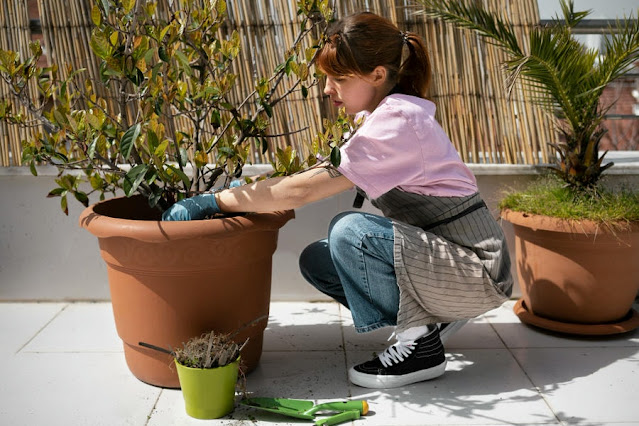Starting a home garden can be one of the most rewarding hobbies, offering a fresh supply of vegetables, herbs, and vibrant flowers. For beginners, the idea of growing plants at home may seem daunting—but with the right home gardening tips for beginners and a little patience, anyone can develop a green thumb. The greatest home gardening tips for beginners will be provided in this post to assist you in successfully growing your very first plants.
Why Start a Home Garden?
Home gardening isn’t just about plants—it’s about well-being. A home garden offers multiple benefits, including:
- Fresh, organic produce
- A relaxing hobby
- Better air quality
- Aesthetic value to your home
- A positive impact on mental health
For beginners, gardening is a fulfilling activity that encourages responsibility, patience, and care.
1. Choose the Right Location
Sunlight is crucial for plant growth. Most vegetables and flowers need at least 4 to 6 hours of sunlight daily. Choose a spot in your balcony, terrace, or backyard that gets ample light. If outdoor space is limited, opt for indoor plants that thrive in partial sunlight.
Tip:
South-facing balconies and windows usually receive the most light.
2. Start Small
Don’t overwhelm yourself by planting too much at once. Begin with a few easy-to-grow plants like:
- Tulsi (Holy Basil)
- Mint
- Coriander
- Tomatoes
- Marigolds
- Aloe Vera
These plants are low-maintenance and perfect for beginners. As you gain confidence, you can expand your garden.
3. Use Quality Soil
Healthy soil means healthy plants. Use nutrient-rich potting mix or organic compost. You can buy soil from local nurseries or make your own compost using kitchen waste.
Tip:
Soil should be well-drained and loose for proper root growth.
4. Select the Right Containers
If you’re gardening in a small space, containers are your best friends. Choose pots with drainage holes to avoid root rot. Plastic, terracotta, ceramic, and grow bags are popular choices.
5. Water Wisely
One of the most frequent errors made by novices is overwatering. Understand the water needs of each plant. Stick your finger in the soil—if it feels dry up to an inch, it’s time to water.
Tip:
To stop evaporation, water should be added early in the morning or late at night.
6. Feed Your Plants
Plants need nutrients to thrive. Use organic fertilizers, compost, or vermicompost every few weeks. Avoid chemical-based fertilizers, especially when growing edibles.
7. Monitor for Pests and Diseases
Inspect plants regularly for signs of pests like aphids or mealybugs. Use natural pest control methods such as neem oil sprays or garlic-chili sprays. The best defense against pests is to keep your plants healthy.
8. Prune and Trim Regularly
Pruning helps your plants grow better and produce more flowers or fruits. Remove dead leaves, weak stems, and faded flowers to encourage new growth.
9. Learn Continuously
Gardening is a journey of learning. Read blogs, watch videos, or join online gardening communities. Each plant teaches you something new.
10. Be Patient and Enjoy the Process
Plants take time to grow. Don’t be discouraged by early failures. Keep experimenting and learning from your experience.
Best Plants for Beginner Gardeners in India
Here’s a quick list of beginner-friendly plants that grow well in Indian climates:
- Coriander (Dhaniya)
- Fenugreek (Methi)
- Spinach (Palak)
- Tomato (Tamatar)
- Chili (Mirchi)
- Tulsi
- Money Plant
- Snake Plant
These plants are easy to care for and grow fast with minimal maintenance.
FAQs: Home Gardening Tips for Beginners
Q1. What are the easiest plants to grow at home?
A: Tulsi, mint, coriander, and money plants are great choices for beginners due to their minimal care requirements.
Q2. How much time do I need to spend on home gardening daily?
A: 10–15 minutes a day is enough for watering, inspecting, and maintaining your garden.
Q3. Can I start gardening without a balcony or backyard?
A: Yes! Many plants like herbs and indoor foliage can thrive on windowsills or indoors with good light.
Q4. What should I do if my plant leaves are turning yellow?
A: Yellow leaves may indicate overwatering, poor drainage, or nutrient deficiency. Adjust watering and consider adding compost.
Q5. Is it necessary to use fertilizer for home gardening?
A: Yes, especially after a few weeks. Organic compost or vermicompost helps replenish nutrients in the soil.
Conclusion
Gardening at home is not just about growing plants—it’s about cultivating a more mindful and healthy lifestyle. These home gardening tips for beginners are designed to guide you through the initial stages and set you up for success. Start small, stay consistent, and most importantly—enjoy the process of watching your garden grow.

.jpg)


.jpg)
.jpg)
.jpg)

